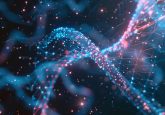Brain-based biomarkers could be used to diagnose autism spectrum disorder

A team of researchers have discovered a link between the development of autism spectrum disorder and early brain enlargement and extra-axial fluid.
A group from the UC Davis MIND Institute based in California (USA) has recently established that infants with disproportionate cerebrospinal fluid and enlarged brains are likely to be diagnosed with autism spectral disorder.
Working alongside a multidisciplinary group of researchers, David Amoral and his team conducted the study with 55 infants who were between the ages of 6 and 36 months. Thirty-three of the infants had an older sibling with autism, and 22 came from a family with no history of the disorder.
The investigation tracked the brain-growth trajectories and cerebrospinal fluid quantities of children diagnosed with the neurodevelopmental disorder from infancy. Using MRI, the children were monitored periodically whilst they slept naturally. The first scans were conducted when the infants were 6 to 9 months and the second between 18 and 24 months.
The children were also frequently assessed for cognitive, social, communication and motor development. Between the ages of 6 and 24 to 36 months, the researchers conducted intensive assessments on the infants’ behavior and the parents were asked to complete questionnaires. After this point, the children were evaluated to determine if they had developed autism spectral disorder.
It was reported that the infants with autistic siblings had a higher rate of the brain anomaly detection and autism diagnosis. During the study, 10 children were diagnosed with autism, while 24% of the high-risk group and 13.5 %of the low-risk group were classified as having other developmental delays. By 6 to 9 months, the infants with autism displayed 20 % more cerebrospinal fluid in the ’extra-axial’ space above and surrounding the brain than typical. It was noted that these levels remained high at 22 % more than the average developing infant between 18 and 24 months of age. The MRI scans used in the study showed that, on average, infants with autism had 7 % larger brain volumes than usual.
Source: Shen MD, Nordahl CW, Young GS et al. Early brain enlargement and elevated extra-axial fluid in infants who develop autism spectrum disorder. Brain. doi:10.1093/brain/awt166 (2013) (Epub ahead of print).





